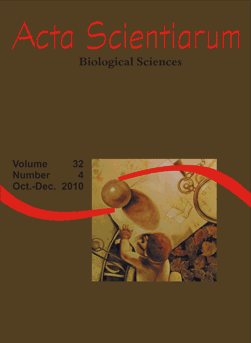<b>Perception and use of fauna resources in communities surrounding a conservation unit in northeast Brazil</b> - doi: 10.4025/actascibiolsci.v32i4.5668
Resumo
Biodiversity is threatened by many human activities, and the creation of new Conservation Units (CUs) attempts to reduce this threat. However, this alone has not achieved the expected results. Partnerships are being established with local communities through research that includes the perceptions of these individuals. Environmental Perception has been used to understand and improve the people-environment relationship in these areas. The Caatinga Biome suffers threats and losses from anthropogenic action. Few of its areas are protected by CUs and further conservation efforts are needed. The Seridó Ecological Station (Seridó ESEC) is one of the few CUs in the Caatinga of Rio Grande do Norte State (NE Brazil). An Environmental Perception study was carried out in this area using Ethnozoology concepts to investigate the perceptions of the surrounding communities and use of local fauna. Ninety-two interviews were conducted in 4 communities with 514 statements obtained in 58 vernacular names. The animal most cited was the Rhea (bird) with 58 citations. Its main uses were medicinal or as human food. The rich local knowledge observed may be used in a partnership to correctly manage local resources in the Seridó ESEC.Downloads
DECLARAÇÃO DE ORIGINALIDADE E DIREITOS AUTORAIS
Declaro que o presente artigo é original, não tendo sido submetido à publicação em qualquer outro periódico nacional ou internacional, quer seja em parte ou em sua totalidade.
Os direitos autorais pertencem exclusivamente aos autores. Os direitos de licenciamento utilizados pelo periódico é a licença Creative Commons Attribution 4.0 (CC BY 4.0): são permitidos o compartilhamento (cópia e distribuição do material em qualqer meio ou formato) e adaptação (remix, transformação e criação de material a partir do conteúdo assim licenciado para quaisquer fins, inclusive comerciais.
Recomenda-se a leitura desse link para maiores informações sobre o tema: fornecimento de créditos e referências de forma correta, entre outros detalhes cruciais para uso adequado do material licenciado.












1.png)




3.png)













